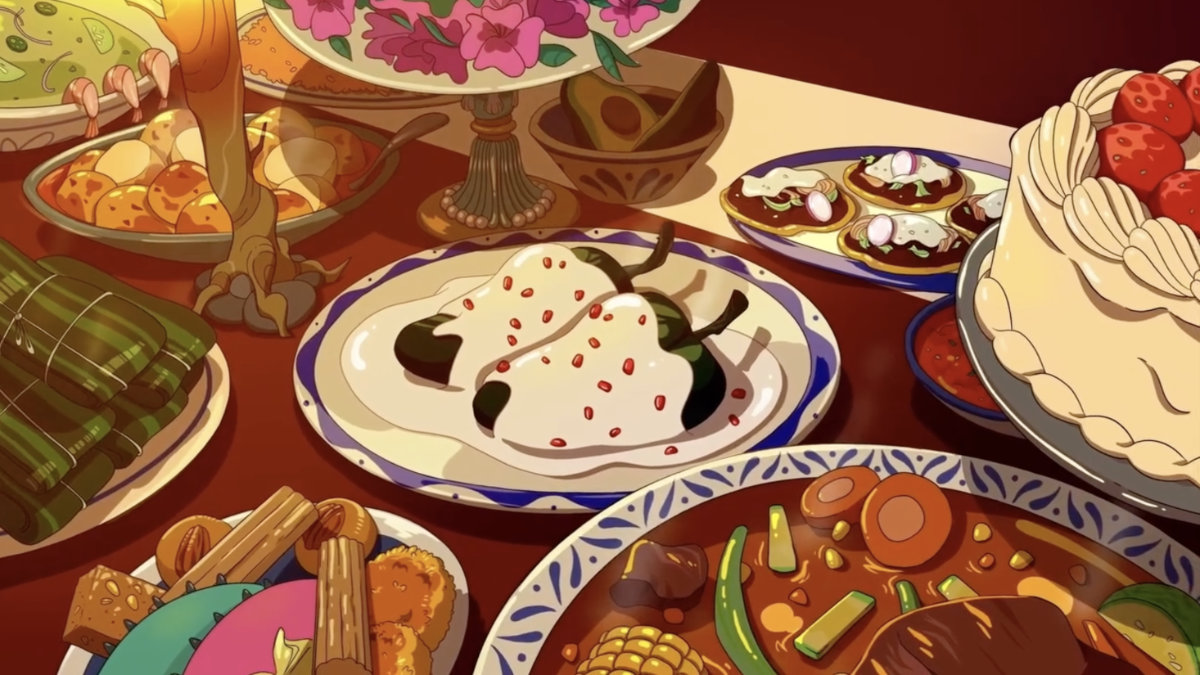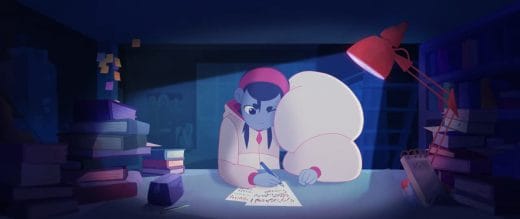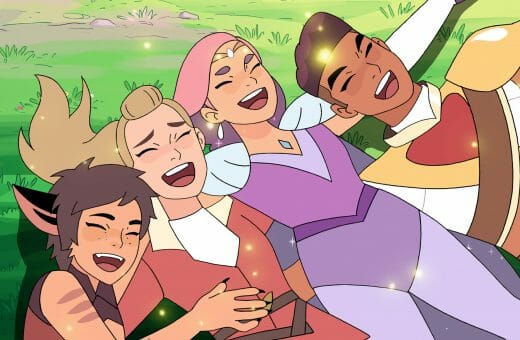
La Desigualdad Acaba Con Todo (Inequality Ends Everything), created by the talented team at Anemona Studio in collaboration with Oxfam Mexico and Agencia Montalvo, is a striking example of how animation can give voice to urgent global issues — in this case, the growing inequality that threatens our world. We spoke with their crew, who shared insight into the creative journey behind La Desigualdad Acaba Con Todo, from its powerful narrative choices to its breathtaking visual style. Anemona Studio used rhythm, symbolism, and classical 2D animation to craft a story that is both emotionally resonant and visually bold.
Their team, headed by Henedy Macias (short film director and head of studio) and Jonathan Rivera (project director), share how Toon Boom Harmony helped them achieve their vision for the project. Whether it was seamlessly blending frame-by-frame 2D animation with 3D elements in complex sequences, maintaining consistency across intricate lighting and shading, or streamlining the workflow for the animation and compositing teams. The project is a testament to their versatility as a studio to achieve ambitious artistic visions with efficiency and flair.
Beyond the short’s technical achievements, this film serves as a reminder of why animation matters. From the banquet table metaphor that drives home the message of inequality to the raw emotion conveyed in every hand-drawn frame, La Desigualdad Acaba Con Todo is a masterclass in socially conscious animation. Dive into our interview to meet the creative minds behind the film, explore the challenges they overcame, and discover how Toon Boom’s software helped bring their vision to life…
Please introduce yourselves and La Desigualdad Acaba Con Todo.
Henedy: We are Anemona Studio, an animation studio based in Mexico with over 14 years of experience. Specializing in storytelling, 2D classical animation, 3D, and visual effects, we are proud to deliver creative and high-quality work in both advertising and, more recently, animated series.
This short film was created for Oxfam Mexico, the final client, with Montalvo as the communication agency and Anemona Studio as the animation studio that made it all possible. Oxfam Mexico was looking for an animation style to bring their story to life. At Anemona, we suggested a classical 2D style inspired by anime, drawing influence from the surreal universes crafted by Hayao Miyazaki and Studio Ghibli. We took this spark of creativity and gave it our unique twist, resulting in this captivating short film.
What is La Desigualdad Acaba Con Todo about?
Jonathan: We had to create a piece that would generate an impact on inequality. The challenge was not only to establish inequality as the disproportionate distribution of resources but also to portray it as what is currently happening: massive consumption of resources by a minority group that seems to have no limits. Inequality is an increasingly extreme problem, and we needed to demonstrate that voracity.

What are some of the key parts of the short’s visual style?
Henedy: For this short film, rhythm was key. It needed to build in intensity alongside the escalating events in the story. The tension had to grow to demonstrate the severity of the situation, which in animation meant increasing the complexity of the animation itself. Moreover, the animation was created in an anime style with classical techniques. Anime is not widely used in Mexico, especially in pieces for nonprofit organizations, making this approach unique and challenging.
What are some of the inspirations behind La desigualdad acaba con todo?
Henedy: Our biggest inspiration was the art of Hayao Miyazaki. We wanted to capture the raw and intense elements of his exaggerated universes — those that can only come from extreme fantasy. Yet, at the same time, we aimed for these visuals to parallel and effectively convey the seriousness of inequality.
How is food used as a tool for storytelling in the short?
Jonathan: We had to use a narrative device to address many of the things affected by inequality. We chose to reflect on a banquet, showcasing the many resources available on this planet—on one side, those who have plenty but still want more, and on the other, those who are losing more and more. The table is filled with details that not only directly reference resources but also resonate specifically with Mexicans: vaquitas (porpoises) in a cocktail, butterflies in guacamole, and, in the end, an animal that symbolizes Mexico, its resources, exploitation, and what we stand to lose forever.
What was the biggest technical challenge on the project?
Henedy: One of the biggest technical challenges we faced were the two shots where we mimicked a real violinist playing the violin. While the violin itself was 3D, we had to replicate the finger animation frame by frame. This is where Toon Boom Harmony was really helpful, allowing us to mix frame-by-frame animation and 3D seamlessly in those particular shots.
What does Toon Boom Harmony let you achieve that made it your go-to tool?
Henedy: We love Harmony for everything. It’s perfect for creating fluid frame-by-frame animation, cut-out, 360° rigs, and rotoscoping. Since it offers all of that, it’s always our go-to software for animating everything from cut-out series to beauty shots, like the ones we created for Oxfam.
What’s next for Anemona Studio?
Henedy: Anemona Studio is currently working on its first original animated series, Mambo & Domingo, which was featured at the Annecy Festival’s Partner Pitches in 2023. The series follows two neighbours who fill their free time doing anything and everything outside. The unlikely best friends create endless and unexpected adventures in their shared backyard and around Toronto.
What do you hope people learn or take away from the short film?
Henedy: That inequality is a problem we cannot overlook. It is becoming more extreme, and if we don’t act, things we take for granted today will no longer exist. We must take action by staying informed, taking steps, and demanding accountability from authorities.
Organizations like Oxfam propose root-level solutions, but the effort must come from everyone.

Can you provide a list of the crew who contributed to the production?
Anemona STUDIO (Animation Studio) in Mexico City / Toronto:
- Direction: Henedy Macías
- Production Design: Henedy Macías
- Production Manager: Alejandra Piña
- Script adaptation: Henedy Macías
- Animation Director: Rafael Luna
- Art Director: Daniel Farrera
- Lighting Director: Dieter Magallán
- Compositing Director: Arturo Beristain
- Compositing Lead: Aarón González
- Storyboards: Daniel Farrera
- 2D Classical Animators: Rafael Luna, Michelle García, Antonio León, Pedro Monteverde, Javier Ortega
- Clean up & Color: Adam Ángeles, Javier Ortega, Rafael Luna
- Lighting and Shading: Michelle García, Antonio León, Adam Ángeles, Javier Ortega, Rafael Luna
- 3D Animation: Aarón González, Arturo Beristain
- Rotoscoping: Javier Ortega, Rafael Luna
- 3D Props: Aarón González, Arturo Beristain
- Concept Art: Daniel Farrera, Ana Gabriela Hernández, Aleza Apartado, Daniela Breña, Stefano Murillo
- Backgrounds: Aleza Apartado, Daniela Breña, Daniel Farrera
- Character Design and Development: Daniel Farrera, Henedy Macías
- Post-production and Character Effects: Arturo Beristain, Aarón González
- Temporary music and tempo: Henedy Macías, Eduardo Rojas
AGENCIA MONTALVO (Communications Agency) in Mexico City:
- CEO: Pepe Montalvo
- Creative VP: Tino Vélez
- Deputy General Creative Director: Sergio Díaz, Carlos Meza
- Project Director: Jonathan Rivera
- Producer: Juan Pablo Osio
- Account Director: Mariana Olivares
- Copywriter: Paloma Barreto
- Creative Director: Jimena Flores
- Want to see more of Anemona Studios work? Be sure to visit the studio’s website.
- Interested in using animation to tell important stories? Artists can download a 21-day free trial of Toon Boom Harmony.



